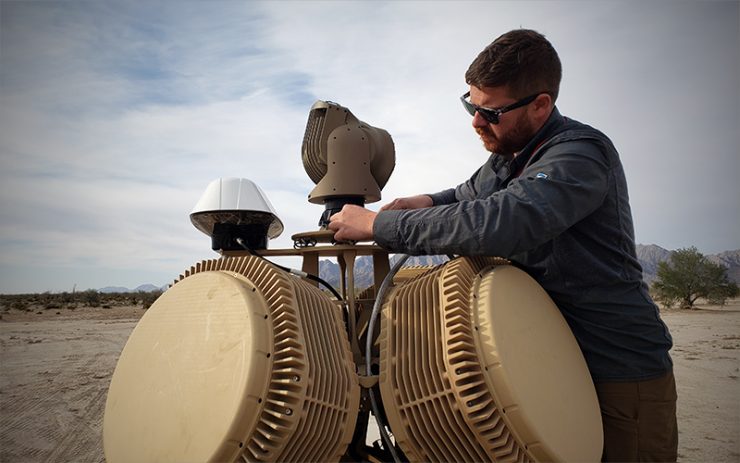The US Defense Department has approved the assessment results for currently fielded Counter-Small Unmanned Aircraft System (C-sUAS) capabilities according to a press release by the US Army. The results include eight systems which will form the basis for future investment. The US Army says most of the assessed systems were initially purchased to address urgent and emerging operational needs of deployed forces. This assessment determined the selection of current systems based on criteria such as effectiveness, usability, sustainment and integration.
The assessment was carried out by the Joint C-sUAS Office (JCO), set up by the Army Secretary in November 2019 to lead and direct efforts for identifying and prioritizing joint gaps and C-sUAS solutions. The Army appointed Maj. Gen. Sean A. Gainey as the JCO’s first director.
The JCO is committed to working with industry to identify emerging technologies, address challenges and encourage competition in future technology development and procurement activities as the Department continues to meet the warfighter’s C-sUAS needs.
The Army says adversary UAS represent a rapidly proliferating, low-cost, high-reward ISR and lethal-attack threat to US personnel and interests.
In a press briefing, Maj Gen Gainey said the objective is “to align existing and future Counter-UAS technology solutions to best address operational needs while applying resources more efficiently”. The assessment has reduced the number of systems being tested. Gainey said. “The services have each been assigned sponsor of each one of those systems, so as we move this forward as a joint approach, it will coordinate the future upgrades to these systems and the contracting of these systems across the joint force.”
The approved solutions include the following:
Fixed/Semi-Fixed Systems
- Fixed Site-Low, Slow, Small Unmanned Aircraft System Integrated Defeat System (FS-LIDS), sponsored by the Army,
- Negation of Improvised Non-State Joint Aerial-Threats (NINJA), sponsored by the Air Force,
- Counter-Remote Control Model Aircraft Integrated Air Defense Network (CORIAN), sponsored by the Navy.
Mounted/Mobile System
- Light-Mobile Air Defense Integrated System (L-MADIS), sponsored by the Marine Corps.
Dismounted/Handheld Systems
- Bal Chatri, sponsored by Special Operations Command,
- Drone Buster, no sponsor, commercial off-the-shelf capability,
- Smart Shooter, no sponsor, commercial off-the-shelf capability.
Command and Control
- Forward Area Air Defense Command and Control (FAAD-C2), sponsored by the Army (includes FAAD-C2 interoperable systems like the Air Force’s Air Defense System Integrator (ADSI) and the Marine Corps’ Multi-Environmental Domain Unmanned Systems Application Command and Control (MEDUSA C2).
The Department says it will continue to work with industry to bring these systems to full maturity or replacement with follow-on enduring solutions. Future research, testing and investment decisions on capability modernisation will consider not only the most up-to-date existing technologies, but, more importantly, those new and emerging technologies currently in development.
(Image: X-MADIS counter UAS suite, Ascent Vision)
For more information visit:
https://www.army.mil/article/236713/army_announces_selection_of_interim_c_suas_systems




